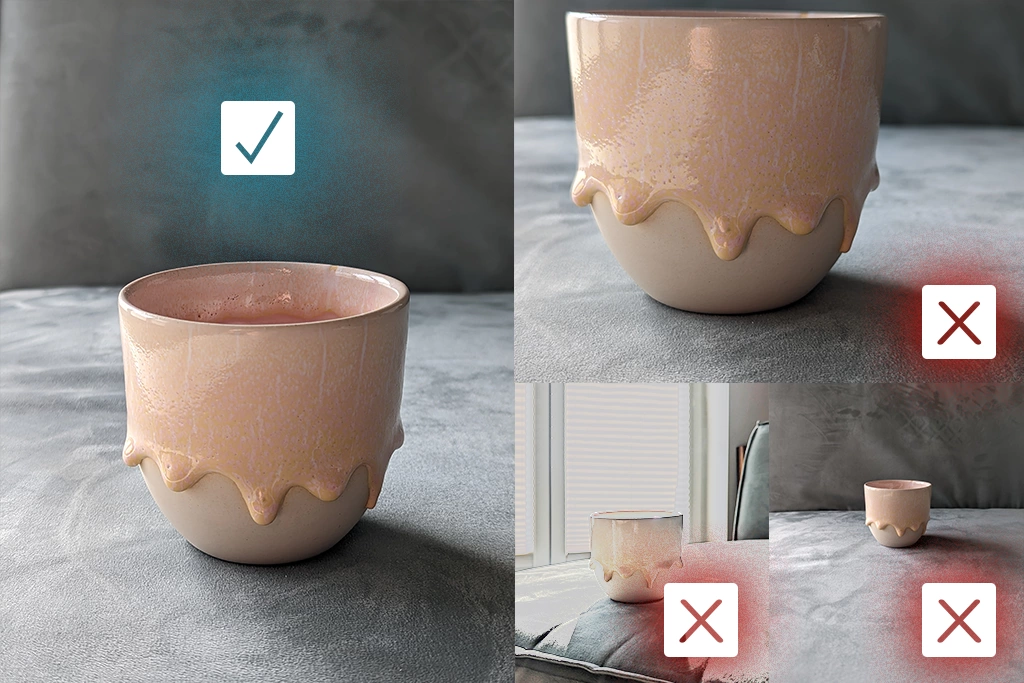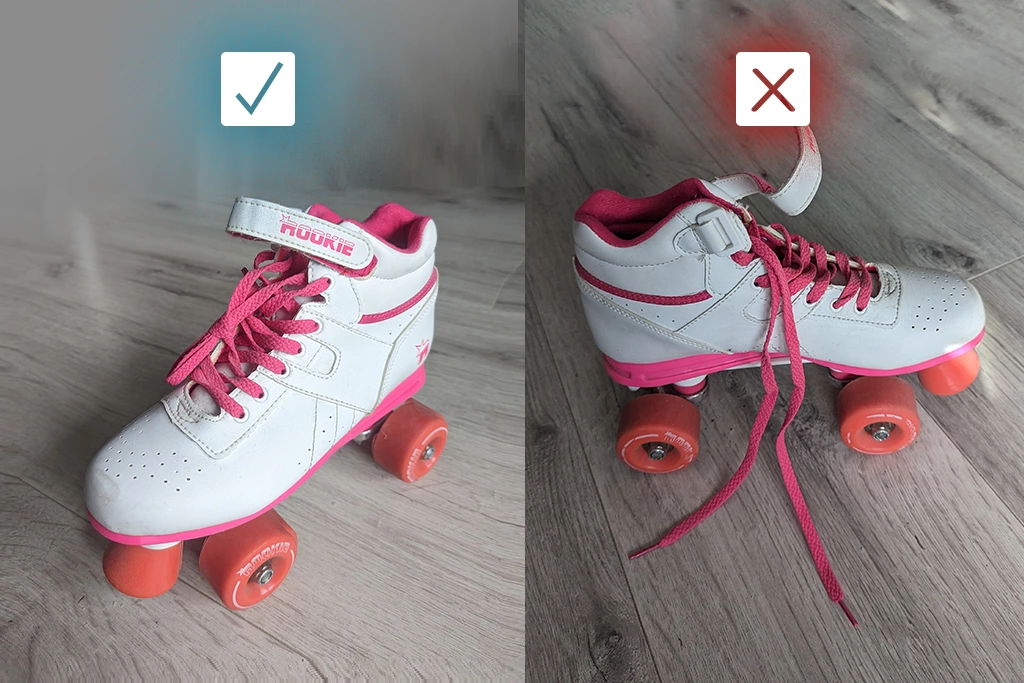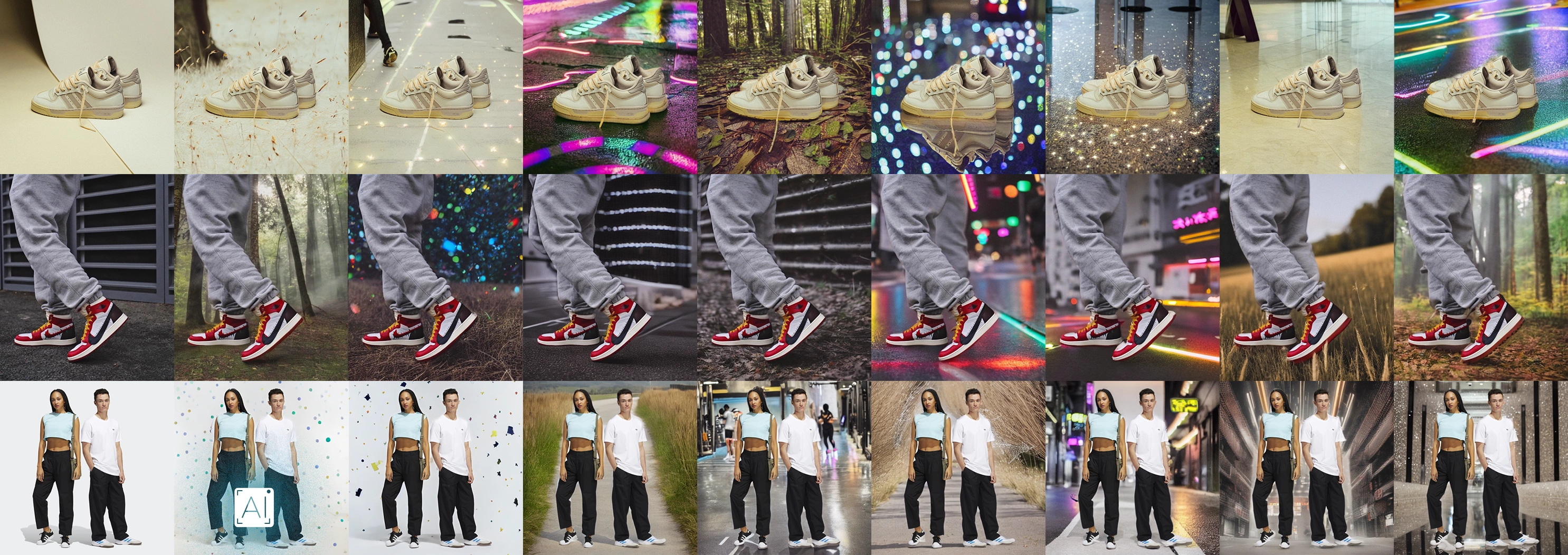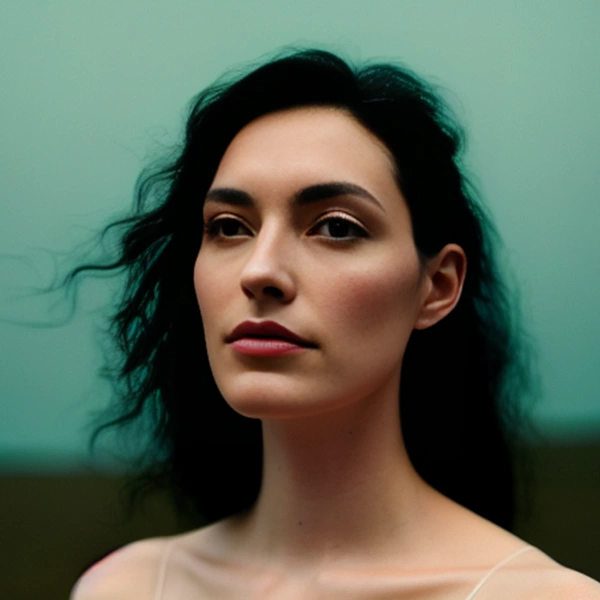A good input photograph is the backbone of getting the best possible results with AI tools. Without a well made photograph, the resulting AI-generated outputs will be lacking in quality and accuracy. One of the most important aspects of capturing a good input photograph is to ensure that it is in focus. Blurry images can lead to significant issues down the line, making it difficult for AI algorithms to generate clear and accurate outputs.
It's essential to remember the old saying "garbage in, garbage out" when it comes to preparing product photographs for such tools. In other words, the quality of the output can only be as good as the quality of the input. For this reason, it is crucial to invest the time and effort to capture a quality image.
Remember the old saying "garbage in, garbage out" when it comes to preparing product photographs for AI tools
There are several rules that are important to follow when it comes to preparing product photographs for AI tools. These rules include ensuring that the photograph is well-lit, with even lighting across the entire subject. It's also important to ensure that the composition is correct, with the subject of the photograph taking up most of the frame. Additionally, it's important to ensure that the product is in focus and that there is no motion blur. Following these rules will ensure that the AI-generated outputs are of the highest possible quality.
Lightning and composition
Lighting and composition are critical components of preparing product photographs, both in traditional world and with AI tools. The product needs to be well-lit so that its shape and details are clearly visible to the algorithms. This means that it's important to ensure that the lighting is even and that there are no harsh shadows or reflections that could obscure the product's features.

The composition of the photograph is also crucial when it comes to getting the best possible results with AI tools. The product should fill out most of the frame, ideally around 60%, but it's also important to leave some space for the background to be visible. The background should be calm and undisturbed so that it's clear where the subject is in space. This will help the algorithms to accurately separate the subject from the background.
It's important to ensure that there are no fragments outside the main body of the product, as these can get easily lost byt the algorithms. This means that any small parts or accessories that are not part of the main body of the product should be removed from the frame. Additionally, there should be no other items in the frame that could be picked up by the algorithms, as this can cause confusion and result in inaccurate outputs.
While AI tools can put the product in an interesting context, it's important to note that they will avoid altering the composition of the image in order to preserve as many details as possible. This means that the original composition of the photograph is critical to ensuring accurate and high-quality outputs from the AI algorithms.
Removing or leaving the background
When it comes to preparing product photographs for use with AI Shoot tools, removing the background is not always necessary. In fact, leaving the background in the image can often result in more interesting and compelling outputs. However, it's important to ensure that the background is calm and undisturbed, as this will help the algorithms to accurately separate the subject from the background.
By leaving the background in the image, AI tools have more context to work with, allowing them to synthesize new environments in which to place the product. This can result in more visually compelling outputs that showcase the product in a range of different contexts and settings. As such, photographers may want to consider leaving the background in their images when preparing them for use with AI tools.
Small parts outside of the main body
While it's always important to experiment with different approaches when preparing product photographs for use with AI tools, as a general rule it's best to avoid including small parts outside of the main subject body. This is because these small parts can easily get lost or misclassified during image interpretation, potentially leading to inaccuracies in the final output.

However, every product is unique, so it's important to experiment with different approaches to find the best approach for a given product.
Experiment, experiment, experiment
While it's important to follow some general rules when preparing product photographs for use with AI tools, it's also important to remember that there's no one-size-fits-all approach. It's possible to get great results by breaking the rules and experimenting with different approaches.

The guidelines presented in this article were developed through experimenting with hundreds of input images and thousands of generations, but the best way to see what works for your specific product is to spend time experimenting yourself.
Just like with a traditional photo shoot, it's important to generate multiple variations of the product photograph and look through the results to find the best shots. The more experimentation and variation you have, the better the chances of finding the best settings and achieving the desired effect for your case. So, don't be afraid to experiment and have fun with the process!



